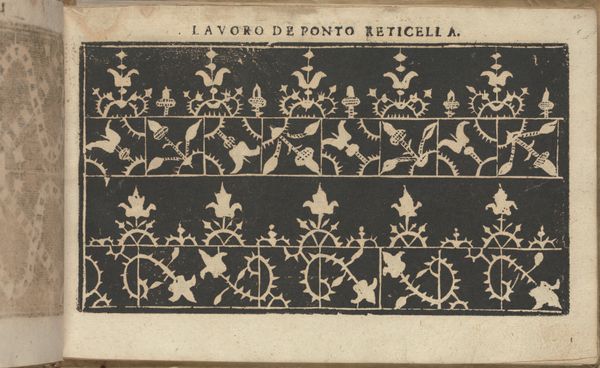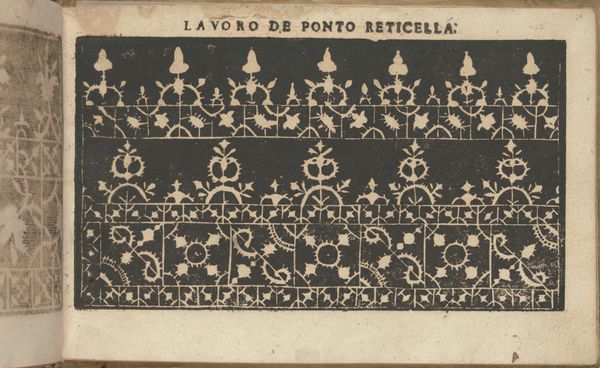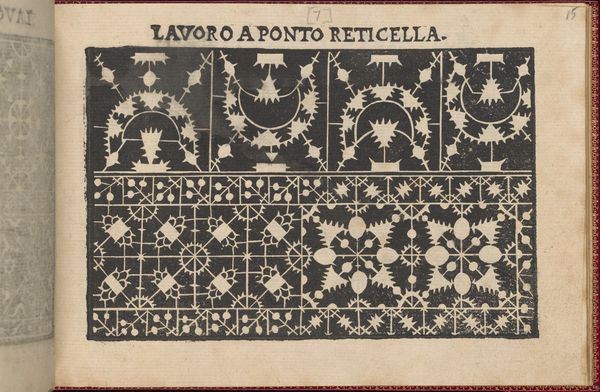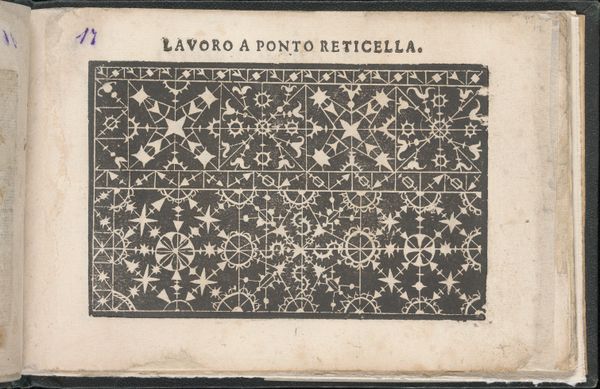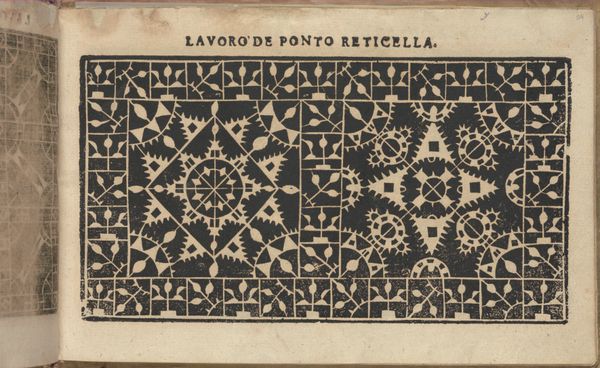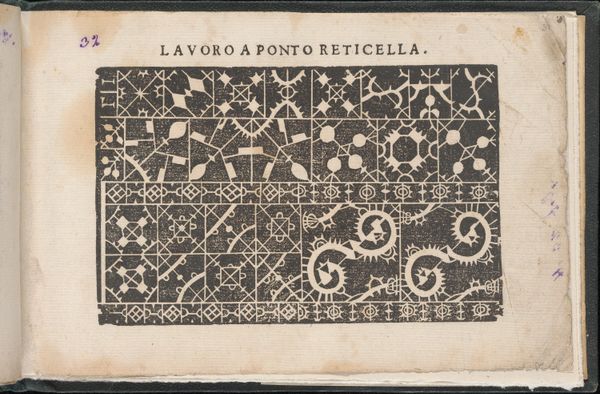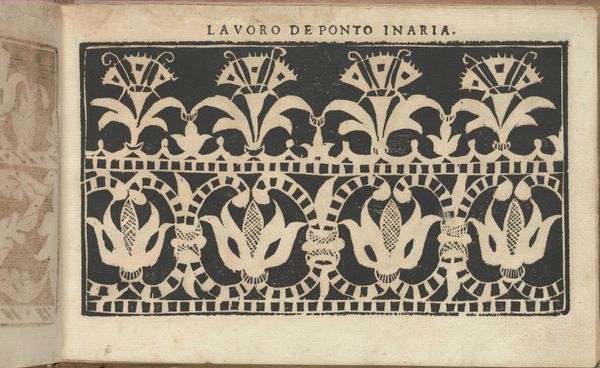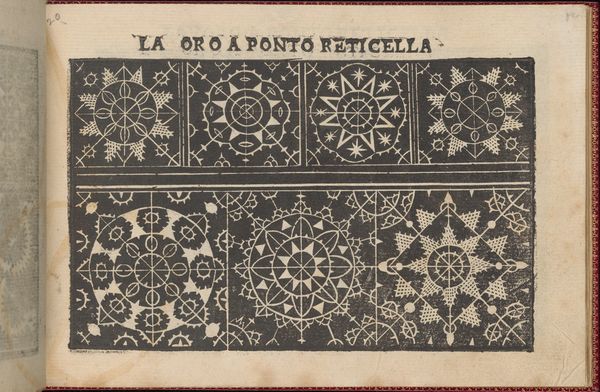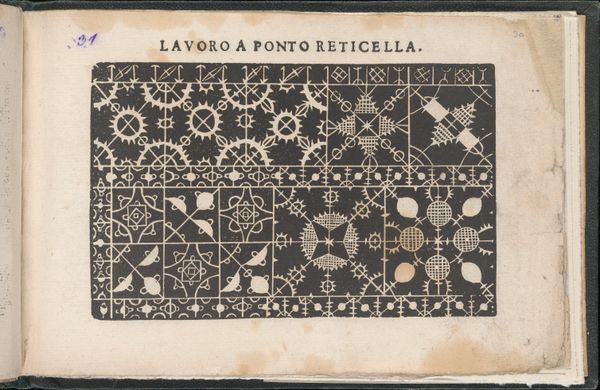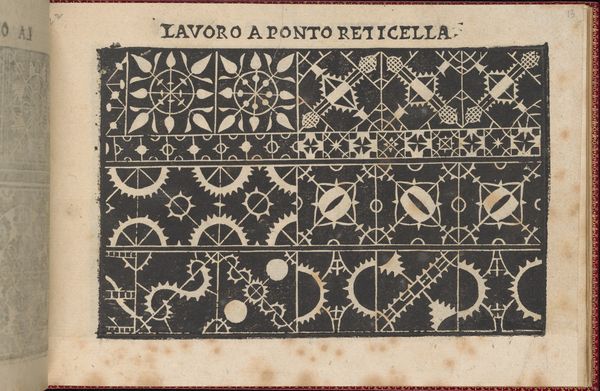
Studio delle virtuose Dame, page 23 (recto) 1597
0:00
0:00
drawing, graphic-art, ornament, print, engraving
#
drawing
#
graphic-art
#
ornament
#
ink paper printed
# print
#
book
#
geometric
#
italian-renaissance
#
engraving
#
historical font
Dimensions: Overall: 5 1/2 x 8 1/16 in. (14 x 20.5 cm)
Copyright: Public Domain
Curator: The delicacy! It's almost breathtaking, wouldn't you agree? Editor: It has an undeniable crispness to it. So precise. Curator: We’re looking at page 23 from "Studio delle virtuose Dame," created in 1597 by Isabella Catanea Parasole. This book, now held at the Metropolitan Museum of Art, is an engraved pattern book. Editor: Pattern book... meaning this wasn't meant to be art for a wall, but a guide. I imagine someone hunched over this, tracing with meticulous concentration. What were the printmaking techniques used in production, I wonder. Curator: Indeed! It’s fascinating how this reflects the rise of female artistry within specific constraints. Women, often excluded from formal artistic training, found outlets in decorative arts, embroidery, and, by extension, the design of such patterns. "Lavoro de Ponti Reticella" translates to “Reticella Lace Work", indicating these prints were used for lace making. Editor: Lace! So labor intensive, all those countless tiny stitches. When you look closer, you begin to imagine hands moving and manipulating materials to make this pattern manifest itself, which had social value and high consumption. Curator: Precisely, Parasole played a pivotal role in shaping perceptions and expanding opportunities for women in the arts, even if indirectly. This pattern book signifies how prints facilitated knowledge transfer. The industrialization of these crafts is what comes to mind for me. Editor: And the impact of this work reverberated through communities of craft workers in Italian Renaissance culture. In effect, challenging what is considered high art versus practical crafts, it emphasizes these forms of labour. The visual style may also highlight or reveal period social dynamics that remain relevant today. Curator: Absolutely. By circulating designs for lace making and other crafts, "Studio delle virtuose Dame" helped foster a creative network for early women artists. Editor: Considering the hands that brought those tiny pieces to life certainly brings added context to Parasole's design here. Curator: Reflecting on it, one certainly considers its impact on both craft and gender roles in art history. Editor: Yes, both materially and artistically.
Comments
No comments
Be the first to comment and join the conversation on the ultimate creative platform.
